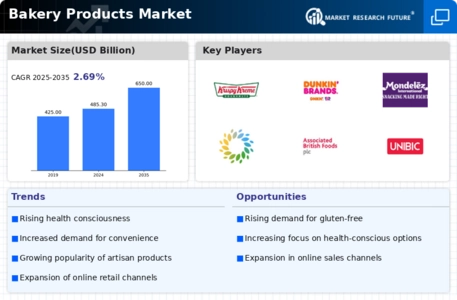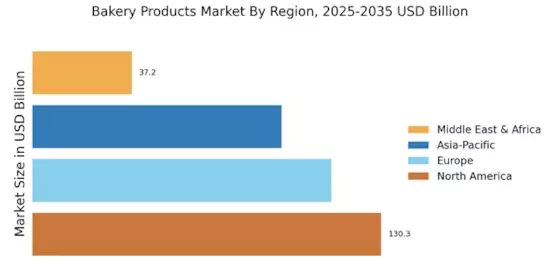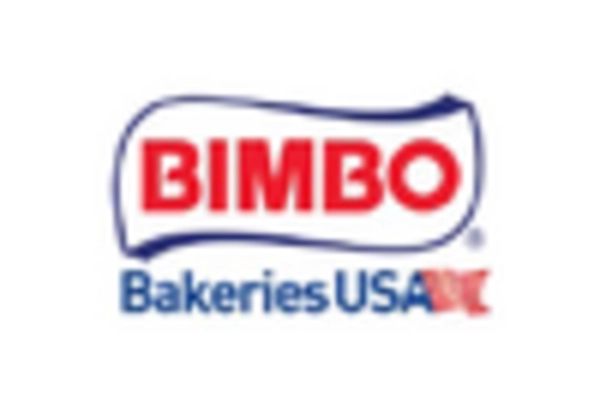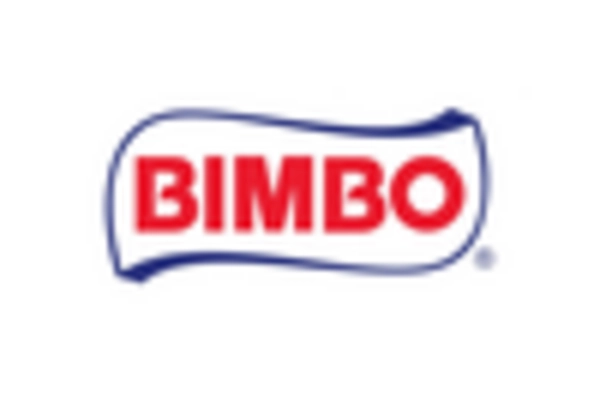E-Commerce Expansion
The Bakery Products Market is experiencing a notable transformation due to the expansion of e-commerce platforms. With the increasing penetration of the internet and mobile devices, consumers are now more inclined to purchase bakery products online. Recent data suggests that online sales of bakery items have surged, with a projected growth rate of 7% annually. This shift is prompting traditional bakeries to adapt their business models, incorporating online ordering and delivery services. The convenience of e-commerce allows consumers to access a wider variety of products, including artisanal and specialty items that may not be available in local stores. Consequently, this trend is reshaping the competitive landscape of the Bakery Products Market.
Sustainable Practices
Sustainability is becoming a pivotal driver in the Bakery Products Market, as consumers increasingly prioritize environmentally friendly practices. This trend is evident in the growing demand for products made with sustainably sourced ingredients and eco-friendly packaging. Market Research Future indicates that a significant portion of consumers is willing to pay a premium for bakery products that adhere to sustainable practices. As a result, many companies are adopting initiatives to reduce their carbon footprint, such as utilizing renewable energy sources and minimizing waste. This commitment to sustainability not only enhances brand loyalty but also positions companies favorably in a market that is progressively leaning towards ethical consumption. The Bakery Products Market is thus witnessing a paradigm shift towards more responsible production methods.
Health-Conscious Offerings
The Bakery Products Market is increasingly influenced by the rising demand for health-conscious offerings. Consumers are becoming more aware of their dietary choices, leading to a surge in the popularity of whole grain, gluten-free, and organic bakery products. This shift is reflected in market data, which indicates that the health-oriented segment of the bakery market is projected to grow at a compound annual growth rate of approximately 5.5% over the next five years. As a result, manufacturers are innovating to create products that cater to these preferences, such as low-sugar and high-fiber options. This trend not only addresses consumer health concerns but also aligns with broader dietary trends, thereby enhancing the appeal of the Bakery Products Market.
Innovative Flavors and Varieties
The Bakery Products Market is characterized by a continuous quest for innovative flavors and varieties. As consumer preferences evolve, there is a growing appetite for unique and exotic flavors that differentiate products in a crowded marketplace. Recent trends indicate that bakery items infused with international flavors, such as matcha, chai, and various spices, are gaining traction among consumers. This inclination towards experimentation is driving manufacturers to develop new recipes and product lines that cater to adventurous palates. Additionally, seasonal and limited-edition offerings are becoming increasingly popular, creating excitement and urgency among consumers. This focus on innovation not only enhances the product portfolio but also contributes to the overall growth of the Bakery Products Market.
Convenience and On-the-Go Options
The Bakery Products Market is significantly influenced by the demand for convenience and on-the-go options. As lifestyles become busier, consumers are seeking quick and easy meal solutions, leading to an increase in the popularity of portable bakery items. Products such as pre-packaged snacks, breakfast pastries, and single-serve items are becoming staples in the market. Data suggests that the convenience segment is expected to grow at a rate of 6% annually, reflecting the changing consumer behavior towards quick meal solutions. This trend is prompting manufacturers to innovate and create products that cater to the need for convenience without compromising on quality. As a result, the Bakery Products Market is adapting to meet the evolving demands of modern consumers.


















Leave a Comment